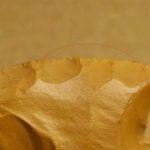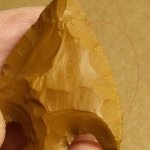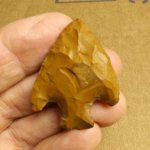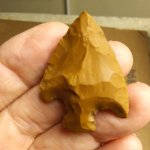OntarioArch
Sr. Member
Here's a good example of what I believe is a re-chipped jasper point. Too bad; not much jasper in my collection and I do not display this piece.
Note the area inside my drawn circles: the patina is distinctly different inside the flake scars along the edge, compared to the patina more toward the center of the blade. My photos could be better: patina difference quite obvious to naked eye, in natural light.
How could a piece of flint buried in the soil for a few thousand years develop differing patinas in a pattern like this? (hint: it couldn't.)
Note the area inside my drawn circles: the patina is distinctly different inside the flake scars along the edge, compared to the patina more toward the center of the blade. My photos could be better: patina difference quite obvious to naked eye, in natural light.
How could a piece of flint buried in the soil for a few thousand years develop differing patinas in a pattern like this? (hint: it couldn't.)
Amazon Forum Fav 👍
Attachments
Last edited:
Upvote
5










